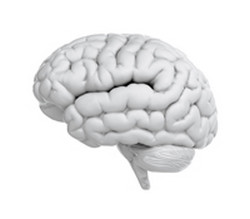Innovatively treating leukodystrophy
Extensive research over the years has provided important insight into the biology of leukodystrophies. Disease pathology is due to myelin deficiency or destruction resulting in axonal dysfunction, but there is currently no available therapy. Seeking to address this issue, the EU-funded LEUKOTREAT(opens in new window) initiative combined the expertise of 19 different European groups, one SME and patient associations. The main objective was to promote therapeutic strategies for the treatment of leukodystrophies. The consortium generated a European database with the clinical data, mutations and biological samples of more than 500 patients. They validated biomarkers found in patients' biological fluids such as the peptide neurotransmitters N-acetylaspartylglutamate (NAAG) for leukodystrophies with inborn error of myelin formation. Additionally, they investigated the role of oxidative stress in axonal degeneration to screen for new biomarkers. Patient fibroblasts exhibited an impaired mitochondrial metabolism. Without anti-oxidant compounds, this would result in oxidative damage. This finding alongside other results clearly indicated that oxidative stress constitutes a major causative disease-driving factor in leukodystrophies. A compound screen led to the identification of anti-oxidant, anti-inflammatory, or neuroprotective compounds for ameliorating disease symptoms. This was exemplified by a cholesterol derivative which induced a delay in the appearance of some behavioural symptoms in young mice. Enzyme replacement therapy (ERT) has limited efficacy in treating leukodystrophies due to the blood-brain barrier (BBB). The BBB limits the delivery of arylsulfatase A (ARSA) from the blood to the brain parenchyma. To overcome this problem, the consortium explored the use of implantable minipumps to deliver ARSA directly to the brain. Researchers explored further therapeutic avenues in the form of innovative cell and gene therapy approaches. Clinical trials were initiated using haematopoietic stem cells transduced with viral vectors for X-linked adrenoleukodystrophy (ALD) and presymptomatic metachromatic leukodystrophy (MLD). Results showed that expression of the mutated protein in nearly 10% of their circulating haematopoietic cells was restored. Moreover, this approach successfully arrested the progression of cerebral demyelinating lesions. In symptomatic forms of MLD, gene therapy with direct brain injection of the viral vector has been successfully tested in animal models. Cell therapy using neural stem cell transplantation can restore myelin production. Finally, the LEUKOTREAT Ethics Research Group carried out a survey on patients’ needs and expectations regarding research in LDs, with the aim to better understand them and thus to provide better support. Therefore, the LEUKOTREAT project successfully translated many therapeutic strategies into the clinic, bringing hope to many patients. Additionally, the efficacy of these dietary and pharmacological interventions opens up avenues for less invasive therapeutic approaches. All documents created during the project are available for download on the LEUKOTREAT website: guidelines for database creation (LeukoDB Charter), Ethics model documents, Patient Information & Consent Forms. A brochure presenting the project and its results as well as the final publications list will also be available soon.







